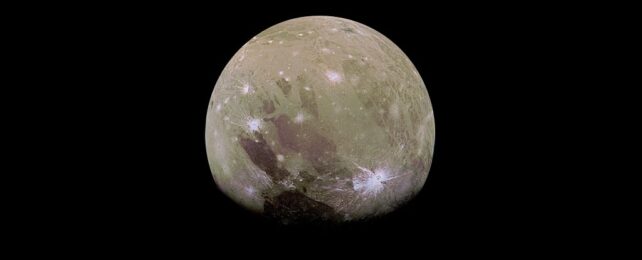
The host star, TOI-5205, is just about four times the size of Jupiter, yet it has somehow managed to form a Jupiter-sized planet, which is quite surprising.

Two newly discovered forms of frozen salt water could help scientists resolve a mystery concerning the Solar System's ice-encrusted moons.

A comma-shaped molecular cloud near the center of the Milky Way seems to be orbiting one of the most sought-after objects in astronomy - an intermediate black hole.

The new layer of the inner core consists of an iron-nickel alloy, like other parts of the core, but it has a different crystal structure.

Observations of supermassive black holes at the centres of galaxies point to a likely source of dark energy - the "missing" 70% of the Universe.

The dwarf planet is known as Quaoar. The presence of a ring at a distance of almost seven and a half times the radius of Quaoar, opens up a mystery for astronomers to solve: why has this material not coalesced into a small moon?

One newly discovered dwarf galaxy, FAST J0139+4328, located a mere 94 million light-years away is barely emitting any light at all. The galaxy seems to be made up almost entirely of dark matter.

Astronomers have discovered a rocky exoplanet about a few dozen light years away from Earth with conditions that could make it habitable.

Astronomers have counted 12 previously unknown moons in orbit around our Solar System's biggest planet, bringing the known total to 92, and leaving Saturn, with its measly count of 83, in the dust.

An international team of astronomers has confirmed the existence of K2-415b, an Earth-sized exoplanet circling an M dwarf star, just 72 light years away from Earth.

Researchers found that there’s about six times as much dark matter in the universe as there is regular matter, a finding consistent with previous measurements.

Of the over 1,000 FRBs detected to date, only 29 were identified as repeating. The nature of fast radio bursts is still unknown.

The video shows four dots of light moving in partial concentric circles around a black disk at their center. What you're actually looking at is a planetary system.

A Martian meteorite that crashed in Morocco 11 years ago contains a vast diversity of organic compounds, which could help researchers discover if Mars could have hosted life and provide important clues about Earth's geological history.

In a molecular cloud called Chamaeleon I data from the telescope has revealed the presence of frozen carbon, hydrogen, oxygen, nitrogen, and sulfur – elements vital to the formation of atmospheres and molecules.